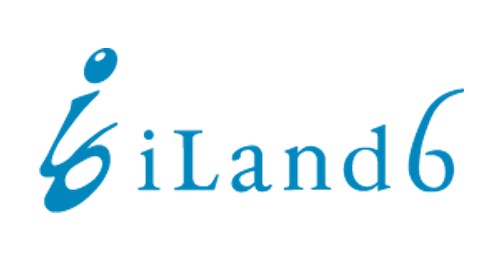最近の日本のトレンドとして、「シェアハウス」があります。
シェアハウスとは、個々の住戸はありますが、多くの施設は住人が共有しています。共有設備には、リビングやリラックススペース、素敵な共同風呂、キッチン設備、ゲストルーム、ワークアウトルームなどがあります。
日本に短期滞在(1〜18ヶ月)する外国人は、以前から「外人ハウス」に住んでいました。外人ハウスは、共有施設や社会的サポートを提供し、日本の賃貸契約にありがちな多額の敷金・礼金を避けることができます。
現在、このトレンドは主流となり、一般の人々だけでなく、若年層、シニア層、シングルマザーなど特定の人口層にもアピールしています。また、職業別、芸術別、禁煙、女性専用など、さまざまなタイプの住宅があります。
この傾向の理由をいくつか挙げると
家族構成:日本の総人口は減少していますが、世帯数は増加しています。
都市化の進展とそれに伴う社会的孤立
自立した高齢者の増加 – 大家族からの移行、そして長寿化
経済性: 一人暮らしでは手に入らない設備を居住者が利用している。
このような傾向は、不動産に限らず、日本のサービスやビジネスに影響を与える可能性があります。
One recent trend in Japan is Shared Houses.A Shared House has individual residential units, but many facilities are shared by the residents. Shared facilities may include living/relaxation space, a nice public bath, kitchen facilities, guest rooms, workout room, etc. Foreigners in Japan short-term (1-18 months) have long lived in “gaijin houses” that provide common facilities, social support, and avoidance of heavy deposit/keymoney typical of Japanese rental contracts.Now, the trend has gone mainstream, appealing to specific population segments such as young adults, senior citizens, single mothers, as well as the general population. There are even houses for professional interest, artistic inclination, no smoking, women only, etc. Some of the reasons for this trend.
- Family dynamics: although Japan’s total population is decreasing, the number of households is increasing.
- Increasing urbanization, and its social isolation
- More independent seniors – shift from extended family, and longer lifespan
- Economic: residents enjoy facilities they could not afford in a lone unit.
Such a trend can impact services and businesses in Japan, far beyond real estate.
先日、東京にあるベンチャーインキュベータを訪問しました。印象的だったのは、このロフト施設から過去2~3年で約80社のスタートアップ企業が誕生しているという、取り組みの量です。その内容は、モバイルベースの駐車場ソリューションや写真共有など、小さなモバイルコマースやソーシャルベンチャーが中心で、私を驚かせるものではありませんでした。 しかし、圧倒的な印象を受けたのは、多くの若者が挑戦しているということでした。
その1週間後、イスラエル大使館の有能な経済担当大臣であるエイタン・クペルストッホ氏が主催した、産業・通商・労働省の新長官アミール・ラング氏の来日に合わせたイスラエル企業の日本法人経営者の会合に出席した際に、この訪問のことが頭に浮かんだ。 話題はイノベーションに移り、日本の若者の間には進取の気性が芽生えているというのがグループの共通認識となりました。日本のベンチャーキャピタルは伝統的にレイトステージやプレIPOに焦点を当てており、本当の意味でのリスクステージにはほとんど資金が割り当てられていません。
イスラエルのベンチャー企業は、イスラエル国内で多くの成功を収めていますが、これまでは、イスラエル国内や海外から資金を調達し、それをイスラエルのベンチャー企業に流すという「テンプレート」でした。今後は、もっと多面的なアプローチが必要だと感じています。イスラエルの経験豊富なベンチャー企業が、日本のベンチャー企業を指導すると同時に、イスラエルと日本の技術提携という難題を解決することができるかもしれません。
Tokyo was quite nervous about cyber threats, even before the Sony Pictures hacking incident. With China and North Korea flanking its borders, the only safe haven sometimes looks like the sea.
Recently the Japan Times reported on 140 email exploits sent to specific employees in power utilities and defense companies. Probably, the unreported number is more like 14,000.
The warming relations of Japan and Israel may be more than good chemistry between PM Abe and PM Netanyahu. In the two countries’ joint communique of May 2014, “Both sides confirmed the necessity of cooperation in the field of cyber security and expressed their expectation to hold talks…” This was not just rhetoric – the First Dialogue on Cyber Issues between Japan and Israel kicked off in November.
Aside from lack of core expertise, one point that has hampered Japan’s cyber efforts has been a proliferation of governmental bodies with conflicting or overlapping responsibilities. However, Japan seems to be taking a cue from the U.S. and Israel, bringing NISC ( National Information Security Center)front-and-center as central coordinating body.
Ironically, one element playing to Japan’s advantage in the cyber war is the lateness of its critical infrastructures to adopt modern open architectures. Banks are far away from cloud computing; electric power companies still use dedicated lines rather than IT networks. Poor for efficiency, but maybe lucky for cyber defense.
東京は、ソニー・ピクチャーズのハッキング事件が起こる前から、サイバー脅威に対してかなり神経質になっていました。中国と北朝鮮が国境を挟んでいるため、唯一の安全な避難場所が海のように見えることがあるのです。
最近、ジャパンタイムズは、電力会社や防衛会社の特定の従業員に送られた140件の電子メールの悪用について報じました。おそらく、報告されていない数は14,000件以上になるだろう。
日本とイスラエルの関係が温暖化しているのは、安倍首相とネタニヤフ首相の相性の良さ以上のものがあるかもしれません。 2014年5月の両国の共同コミュニケでは、”双方は、サイバーセキュリティ分野での協力の必要性を確認し、協議を行うことへの期待を表明した… “とある。 これは単なるレトリックではなく、11月には日本とイスラエルの間で「第1回サイバー問題に関する対話」が開始されました。
日本のサイバー分野における取り組みを阻害してきたのは、中核となる専門家の不足に加えて、責任の所在が矛盾したり重複したりする政府機関が多数存在することでした。 しかし、日本は米国やイスラエルを参考にして、NISC(National Information Security Center)を中心的な調整機関として前面に打ち出しているようです。
皮肉なことに、日本がサイバー戦争で有利になる要素の一つは、重要なインフラが最新のオープン・アーキテクチャを採用するのが遅いことです。銀行はクラウドコンピューティングとは程遠く、電力会社はITネットワークではなく専用線を使っています。効率は悪くても、サイバー防衛には有利かもしれません。
Tokyo was quite nervous about cyber threats, even before the Sony Pictures hacking incident. With China and North Korea flanking its borders, the only safe haven sometimes looks like the sea.Recently the Japan Times reported on 140 email exploits sent to specific employees in power utilities and defense companies. Probably, the unreported number is more like 14,000.The warming relations of Japan and Israel may be more than good chemistry between PM Abe and PM Netanyahu. In the two countries’ joint communique of May 2014, “Both sides confirmed the necessity of cooperation in the field of cyber security and expressed their expectation to hold talks…” This was not just rhetoric – the First Dialogue on Cyber Issues between Japan and Israel kicked off in November.Aside from lack of core expertise, one point that has hampered Japan’s cyber efforts has been a proliferation of governmental bodies with conflicting or overlapping responsibilities. However, Japan seems to be taking a cue from the U.S. and Israel, bringing NISC ( National Information Security Center)front-and-center as central coordinating body.Ironically, one element playing to Japan’s advantage in the cyber war is the lateness of its critical infrastructures to adopt modern open architectures. Banks are far away from cloud computing; electric power companies still use dedicated lines rather than IT networks. Poor for efficiency, but maybe lucky for cyber defense.
現在の日本のアベノミクスは、3本の矢(行動の段階)に基づいています。
1 積極的な金融緩和
2 大規模な財政出動
3 構造改革
第1段階と第2段階は迅速に実施され、2013年には経済にシュガーラッシュをもたらした。 しかし、欧米の報道機関の専門家の多くは、第3の矢がすぐに、強力に、あるいは全く発射されないのではないかと疑っている。 構造改革には政治資金が必要であり、与党である自民党は既得権益層の足元をすくうことに躊躇するだろうと考えているからだ。
だからこそ、旧友の里見直紀さんに会ったとき、違う話を聞いて嬉しくなった。里見さんは、日本の電気事業に特化したコンサルティング会社であるネットリサーチ株式会社の副社長兼CTOである。 「現政権は、エネルギー分野の改革に向けて積極的に準備を進めています」と里見さんは言う。 「東京電力は、東日本大震災とそれに続く福島第一原子力発電所の事故以来、国の管理下に置かれています。 東京電力は、東日本大震災と福島第一原子力発電所の事故以来、国の管理下に置かれています。 東京電力は、東日本大震災と福島第一原子力発電所の事故以来、国の管理下に置かれている。 日本の地域電力会社10社は、2024年までに合計8,000万世帯にスマートメーターを導入することを決定しました。”
第3の矢は、まだまだ舞い上がるかもしれませんね。
Japan’s current Abenomics is based on three Arrows, or phases of action:
1 Aggressive monetary easing
2 Large-scale fiscal stimulus
3 Structural reform
Phases 1 and 2 were implemented quickly, and provided a sugar rush to the economy during 2013. But, most pundits in the Western press have been skeptical the 3rd arrow will be shot soon, strong, or at all. The thought is that structural reform costs political capital, and the ruling LDP will be reticent to step on the toes of its vested interests.
That’s why I was pleasantly surprised to hear a different story when I met my old friend Naoki Satomi. Satomi-san is VP and CTO of Net Research, Inc, a boutique consultancy focused on Japan’s electric utility field. “The current government is making aggressive preparations for reform of the energy field”, he told me. “Tokyo Electric Power (TEPCO) has been under control of the national government since the Tohoku earthquake and subsequent Fukushima nuclear crisis. The government is using this leverage to push a reform agenda. This will include detachment of energy power generation from electricity transmission and distribution, and broad implementation of Smart Grid demanding new approaches to IT infrastructure. All 10 of Japan’s regional power utilitities have decided to deploy smart meters to a total of 80 million households by 2024.”
The 3rd arrow may yet soar!
KDDIは、2012年度下半期の業績を修正し、営業利益を4~5%増加させると予想しています。2011年、KDDIの売上は9%減少しました。スマートフォン市場への参入が遅れたことに加え、ソフトバンクがiPhoneを長年独占し、イー・モバイルを買収したことにより、ソフトバンクに第2位のキャリアとして抜かれたためと予想されます。 KDDIは今年、巻き返しのため、2012年9月から強力なLTEネットワークでiPhone 5のサービスを提供しています。
両社とも、スマートフォンの固定電話パッケージからの短期的な収益の増加、より多くの帯域を求める消費者の果てしない要望への対処という道を歩んでいます。
一方、携帯電話キャリアNo.1のNTTドコモ(加入者数6,000万人)は、提供するコンテンツをよりコントロールし、サムスンも含めたメーカーがコントロールできるAndroid携帯を提供するという道を歩んでいます。 ドコモは、国内外のコンテンツ企業を買収したり、提携したりしており、例えば、Siriのようなサービスをリリースし、人気を博しています。
果たしてどちらのアプローチが正しいのか。ドコモがグーグルやアップルに追いつこうとして息を呑むのか、それともこの戦略が競争力と財務基盤を確保するのか楽しみです。
Lorem ipsum dolor sit amet, consectetuer adipiscing elit. Aenean commodo ligula eget dolor. Aenean massa.
株式会社アイランドシックス
東京都千代田区神田神保町2-38
いちご九段ビル2階
03-3556-5353
